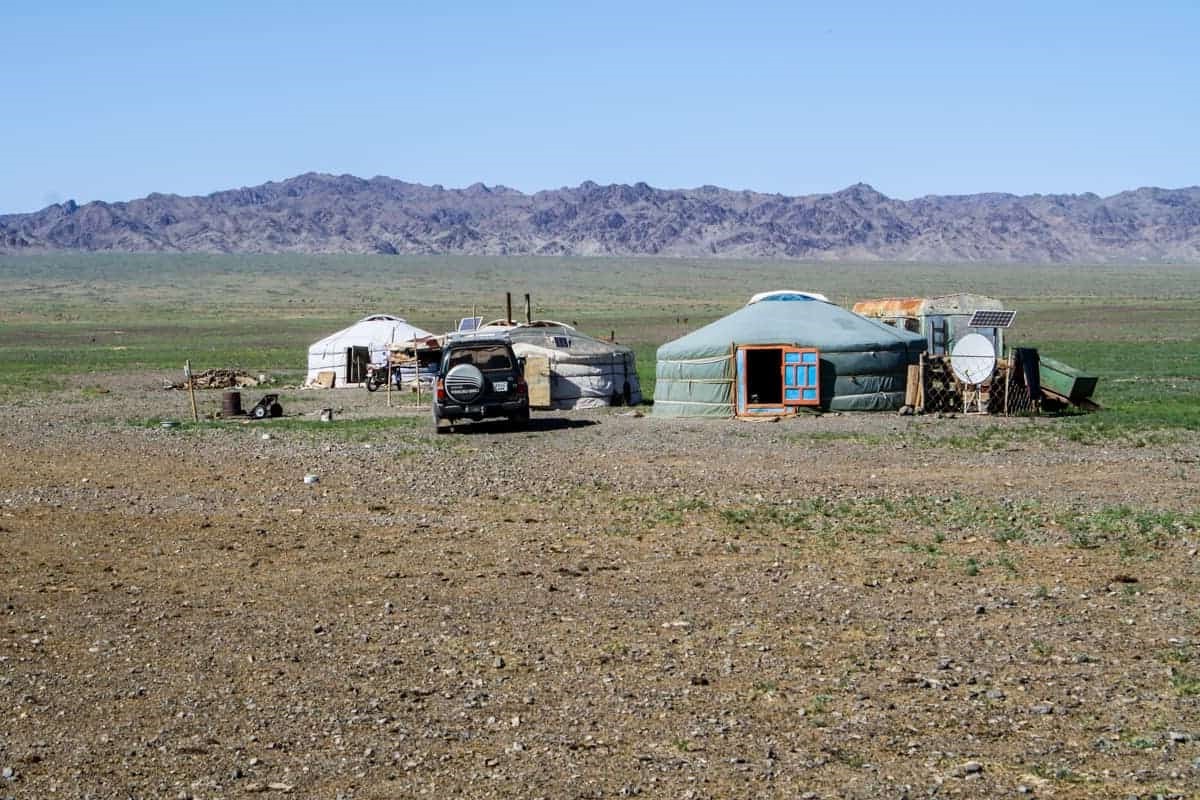Home>Weather and Climate>Average Temperature In Asia: Climate And Weather Patterns


Weather and Climate
Average Temperature In Asia: Climate And Weather Patterns
Published: March 5, 2024
Discover the diverse weather and climate patterns in Asia, including average temperatures and regional variations. Learn about the unique climatic conditions across the continent.
(Many of the links in this article redirect to a specific reviewed product. Your purchase of these products through affiliate links helps to generate commission for Temperatures.com, at no extra cost. Learn more)
Table of Contents
Introduction
The average temperature in Asia is a topic of great significance, as it plays a pivotal role in shaping the region's climate and weather patterns. Asia, the largest and most populous continent on Earth, encompasses a diverse range of landscapes, from the icy tundra of Siberia to the sweltering deserts of the Middle East. This immense geographical expanse gives rise to a wide spectrum of temperatures, each exerting a profound influence on the environment, agriculture, and the daily lives of millions of people.
Understanding the average temperature in Asia requires a comprehensive exploration of the various factors that contribute to its fluctuation. From the towering Himalayas to the vast expanses of the Pacific Ocean, a multitude of elements come into play, including latitude, altitude, proximity to water bodies, and prevailing wind patterns. These factors interact in complex ways, giving rise to the diverse climate and weather conditions that characterize different regions across the continent.
Moreover, the average temperature in Asia is not static; it undergoes seasonal variations and long-term trends, which are influenced by natural phenomena such as monsoons, El Niño, and the Asian winter monsoon. These climatic oscillations have far-reaching implications for agriculture, water resources, and the overall well-being of the inhabitants of Asia.
In this article, we will delve into the intricate web of factors that shape the average temperature in Asia, unraveling the complex interplay of geographical, meteorological, and environmental elements. By gaining a deeper understanding of the dynamics at play, we can appreciate the profound impact of temperature on the region's ecosystems, economies, and societies. Let's embark on a journey through the diverse climates and weather patterns of Asia, exploring the implications of temperature variations and the potential future scenarios that await this vast and vibrant continent.
Factors Affecting Average Temperature in Asia
The average temperature in Asia is influenced by a myriad of factors, each contributing to the complex mosaic of climates and weather patterns across the continent. One of the primary determinants of temperature is latitude. As a continent spanning from the northern reaches of the Arctic to the tropical islands of Southeast Asia, Asia experiences a wide range of latitudinal variations. Areas closer to the equator receive more direct sunlight, resulting in higher temperatures, while regions situated farther from the equator tend to experience cooler climates.
Altitude also exerts a significant influence on temperature. The towering mountain ranges of Asia, including the Himalayas and the Tibetan Plateau, play a crucial role in shaping local climates. As air ascends a mountain slope, it cools and condenses, leading to lower temperatures and the formation of precipitation. This phenomenon gives rise to the stark temperature differentials between high-altitude regions and the low-lying plains, contributing to the diverse microclimates found throughout Asia.
Proximity to water bodies, such as oceans, seas, and large lakes, is another pivotal factor affecting average temperatures in Asia. Coastal regions benefit from the moderating influence of maritime climates, which tend to exhibit milder temperature fluctuations compared to inland areas. The vast expanse of the Pacific Ocean, for instance, influences the climate of countries bordering its shores, while the Indian Ocean impacts the weather patterns of South Asian nations. Additionally, the presence of water bodies can lead to the formation of seasonal monsoons, further shaping temperature and precipitation patterns across the continent.
Prevailing wind patterns also play a crucial role in determining average temperatures in Asia. The movement of air masses, influenced by global wind systems such as the westerlies and trade winds, contributes to the distribution of heat and moisture across the continent. For example, the Siberian High, a large atmospheric high-pressure system, brings frigid air from the Arctic into northern Asia during the winter, leading to exceptionally low temperatures in the region.
These factors, among others, interweave to create the intricate tapestry of temperatures that define Asia's diverse climates. By understanding the multifaceted nature of these influences, we can gain deeper insights into the dynamic interplay of geographical, meteorological, and environmental elements that shape the average temperature in Asia.
Climate Patterns in Asia
Asia boasts an astonishing array of climate patterns, owing to its vast size and diverse geographical features. From the frozen landscapes of the Arctic to the steamy tropics of Southeast Asia, the continent encompasses an extensive spectrum of climates, each with its own unique characteristics and influences.
One of the defining climate patterns in Asia is the presence of the monsoon system, which exerts a profound impact on the region's weather. The Asian monsoon, a seasonal wind pattern, brings heavy rainfall to large parts of the continent, particularly in South and Southeast Asia. The summer monsoon, fueled by the temperature differential between land and sea, results in torrential downpours that are vital for agriculture and water resources. Conversely, the winter monsoon brings dry, cold air from the Asian interior, affecting countries such as China and Mongolia. The monsoon system plays a pivotal role in shaping the agricultural calendar and influencing the livelihoods of millions of people across Asia.
In Central Asia, a contrasting climate pattern emerges, characterized by arid and semi-arid conditions. The vast deserts of the region, including the Gobi Desert and the Karakum Desert, experience scorching temperatures and minimal precipitation. These arid climates pose significant challenges for agriculture and human habitation, shaping the lifestyles and economic activities of the inhabitants.
The high-altitude regions of Asia, particularly the Himalayas and the Tibetan Plateau, exhibit unique climate patterns influenced by their elevation. These areas are known for their frigid temperatures, high winds, and the formation of glaciers. The Himalayas, often referred to as the "Third Pole," play a crucial role in regulating the climate of the surrounding regions, serving as a source of freshwater for major rivers such as the Ganges, Indus, and Brahmaputra.
Coastal regions across Asia experience maritime climate patterns, characterized by relatively mild temperatures and moderate precipitation. The proximity to large bodies of water, such as the Pacific Ocean and the Indian Ocean, moderates temperature extremes, creating favorable conditions for agriculture and human settlement.
The diverse climate patterns of Asia reflect the continent's rich tapestry of geographical and meteorological influences. From the monsoon-driven rainfall of South Asia to the arid deserts of Central Asia and the high-altitude climates of the Himalayas, Asia's climates are as varied as they are impactful, shaping the lives and livelihoods of its inhabitants in profound ways.
Weather Patterns in Asia
The weather patterns in Asia are as diverse and dynamic as the continent itself, encompassing a wide range of meteorological phenomena that influence daily life, agriculture, and the environment. From the bone-chilling cold of Siberian winters to the sweltering heat of the Arabian Peninsula, Asia experiences a rich tapestry of weather patterns that shape the experiences of its inhabitants.
One of the most notable weather patterns in Asia is the occurrence of extreme temperatures. In the northern reaches of Asia, particularly in Siberia and the Russian Far East, bone-chilling cold grips the region during the winter months. Temperatures plummet well below freezing, often reaching -40 degrees Celsius or lower, creating harsh conditions for both human populations and wildlife. Conversely, in the deserts of Central Asia and the Middle East, scorching heat dominates the weather patterns, with temperatures soaring to staggering heights during the summer months. The arid climates of these regions exacerbate the impact of the heat, posing significant challenges for agriculture and water resources.
Asia is also prone to the occurrence of severe weather events, including tropical cyclones, typhoons, and monsoons. Coastal regions in South and Southeast Asia are particularly vulnerable to the destructive forces of tropical cyclones, which bring torrential rains, powerful winds, and storm surges. These events can have devastating impacts on communities, infrastructure, and agriculture, highlighting the need for robust disaster preparedness and mitigation measures.
The monsoon season, a hallmark of weather patterns in Asia, brings both relief and challenges to the region. While the summer monsoon replenishes water sources and sustains agricultural productivity, it can also lead to flooding and landslides, particularly in densely populated areas. Conversely, the winter monsoon brings dry, cold air to parts of Asia, impacting temperature and precipitation patterns, and influencing activities such as farming and fishing.
Furthermore, the weather patterns in Asia are intricately linked to broader global phenomena, such as El Niño and La Niña. These climate oscillations can have far-reaching effects on temperature, rainfall, and weather extremes across the continent, influencing everything from crop yields to water availability.
In essence, the weather patterns in Asia are a testament to the continent's climatic diversity and the complex interplay of geographical, meteorological, and environmental factors. From extreme temperatures to the impact of monsoons and the influence of global climate phenomena, Asia's weather patterns shape the daily lives and experiences of its inhabitants in profound ways.
Impact of Average Temperature on Agriculture and Economy
The average temperature in Asia exerts a profound influence on agriculture and the overall economy of the continent. As a region with a rich agricultural heritage and a diverse array of economic activities, Asia's reliance on favorable temperature conditions is paramount to its prosperity.
Agriculture, a cornerstone of many Asian economies, is intricately linked to temperature variations. The timing and distribution of rainfall, the length of growing seasons, and the prevalence of extreme weather events are all profoundly impacted by average temperatures. In regions where agriculture forms the backbone of the economy, such as the fertile plains of the Indian subcontinent and the rice paddies of Southeast Asia, temperature fluctuations can have significant implications for crop yields and food security. Higher temperatures, for instance, can lead to heat stress in crops, affecting their growth and productivity. Conversely, colder temperatures can limit the types of crops that can be cultivated and the duration of the growing season. Furthermore, extreme weather events, often exacerbated by temperature variations, can result in crop damage, leading to economic losses for farmers and disruptions in the food supply chain.
The impact of average temperature on agriculture extends beyond crop cultivation to include livestock rearing and aquaculture. Livestock, such as cattle and poultry, are sensitive to temperature extremes, with heat stress affecting their health and productivity. In coastal areas, rising sea temperatures can impact marine ecosystems, influencing the abundance and distribution of fish and other aquatic resources, thereby affecting the livelihoods of fishing communities.
In addition to agriculture, the broader economy of Asia is intricately tied to temperature patterns. Industries such as tourism, energy, and manufacturing are all susceptible to the effects of temperature variations. For instance, the tourism sector in tropical regions is heavily reliant on favorable temperatures, with hot and humid conditions attracting visitors to beaches and resorts. Conversely, energy demand fluctuates with temperature, particularly in regions experiencing extreme heat or cold, impacting the consumption of electricity and fuel for heating and cooling purposes. Moreover, temperature variations can influence the availability of water resources, affecting hydropower generation and agricultural irrigation, both of which are critical components of the regional economy.
In summary, the impact of average temperature on agriculture and the economy in Asia is multifaceted and far-reaching. From its influence on crop yields and food security to its effects on industries and livelihoods, temperature variations play a pivotal role in shaping the economic landscape of the continent. Understanding and adapting to these impacts is crucial for building resilience and sustainability in the face of a changing climate.
Future Projections for Average Temperature in Asia
The future projections for average temperature in Asia paint a sobering picture of the potential impacts of climate change on the continent. As global temperatures continue to rise due to human activities, Asia is expected to face a myriad of challenges stemming from the changing climate.
Climate models indicate that Asia will experience overall warming in the coming decades, with variations in temperature increases across different subregions. The Intergovernmental Panel on Climate Change (IPCC) projects that Central, South, and Southeast Asia are likely to experience more pronounced temperature rises compared to other parts of the continent. This heightened warming is attributed to a combination of factors, including the amplifying effects of land-use changes, urbanization, and the release of greenhouse gases.
The consequences of these projected temperature increases are far-reaching. One of the most significant impacts is the exacerbation of extreme weather events. As temperatures rise, the frequency and intensity of heatwaves, droughts, and heavy rainfall events are expected to escalate, posing significant risks to human health, agriculture, and infrastructure. Moreover, the warming of the Asian landmass is likely to influence monsoon patterns, potentially leading to shifts in precipitation distribution and the onset of monsoon seasons, with implications for water resources and agricultural productivity.
The implications of rising temperatures extend beyond meteorological phenomena to encompass ecological and environmental changes. Higher temperatures can disrupt ecosystems, affecting the distribution and abundance of plant and animal species. In particular, the delicate balance of high-altitude ecosystems, such as the Himalayan region, is at risk due to the warming climate, potentially leading to the loss of biodiversity and the retreat of glaciers, with implications for downstream water availability.
Furthermore, the projected temperature increases in Asia have implications for human societies and economies. Heat stress, particularly in urban areas, can pose health risks for vulnerable populations, while the agricultural sector may face challenges in adapting to changing temperature regimes. Additionally, the energy demand for cooling purposes is expected to rise, placing additional strains on infrastructure and energy systems.
In response to these projections, efforts to mitigate and adapt to the impacts of rising temperatures are crucial. Implementing sustainable land-use practices, enhancing urban resilience, and promoting renewable energy sources are among the strategies that can help mitigate the effects of increasing temperatures. Additionally, investing in climate-resilient infrastructure and fostering international cooperation on climate action are essential for addressing the challenges posed by the projected temperature changes in Asia.
As the future unfolds, proactive measures and collaborative initiatives will be essential in navigating the complex landscape of changing temperatures in Asia, ensuring the resilience and well-being of the continent's diverse ecosystems and societies.














